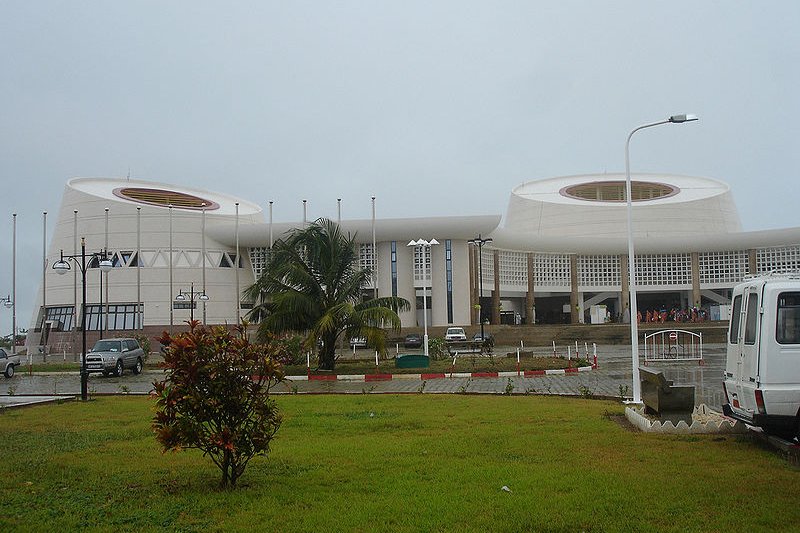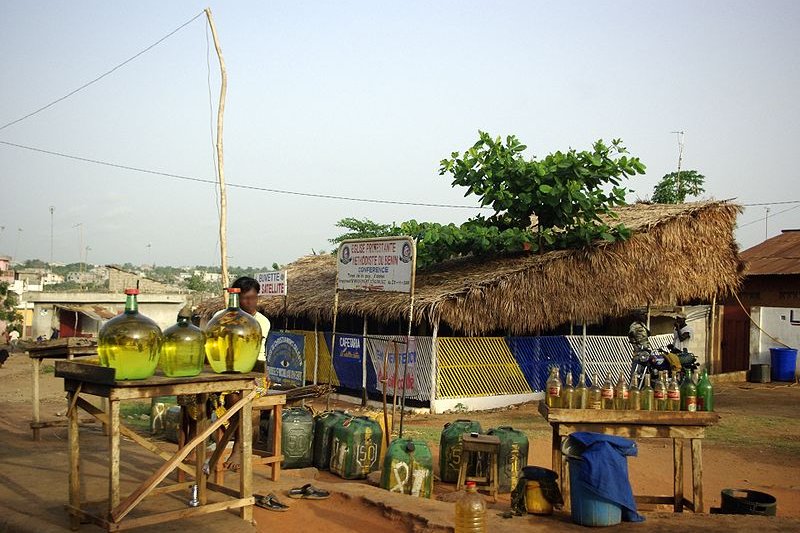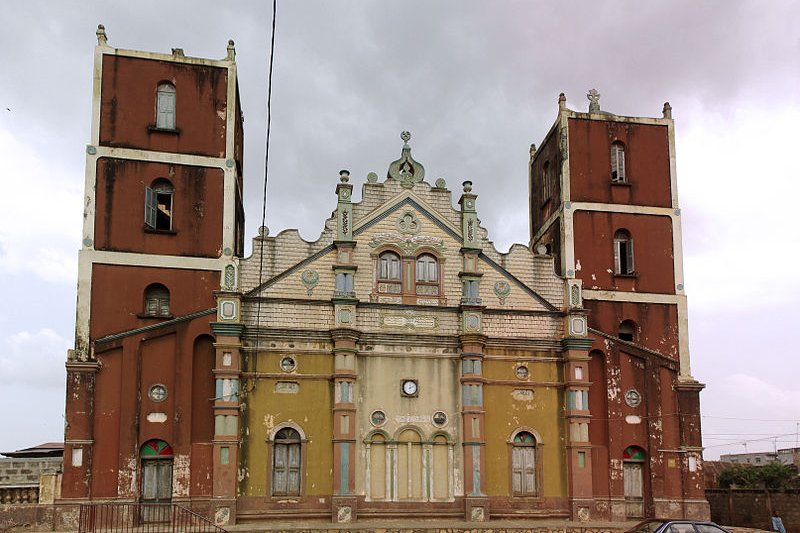 Parliament of Benin in Porto Novo
Parliament of Benin in Porto NovoSource: https://commons.wikimedia.org/wiki/File:Parliament_building_of_Benin,_2007.jpg
Author: peacecorpschadsey

Porto-Novo is the official capital of Benin. With a population of around 300,000 people (2012 estimate), it is the second largest city in the country after Cotonou, which is a vastly more important city.
While Cotonou enjoys a location facing the Atlantic Ocean, Porto-Novo is deeper inland. It is a port on the Gulf of Guinea, in a major agricultural region that produces palm oil, cotton and kapok.
Porto-Novo, which means "new port" in Portuguese, dates back to the Portuguese period, when it served as a port for the slave trade. In 1863, following bombardment by the British, the Kingdom of Porto-Novo was forced to seek protection from the French. However, the neighboring Kingdom of Abomey objected to any form of French intervention, leading to a war between the two kingdoms.
 Kiosk selling oil by the roadside in Porto Novo, Benin
Kiosk selling oil by the roadside in Porto Novo, BeninSource: https://commons.wikimedia.org/wiki/File:Kpayo.jpg
Author: Babylas

Porto-Novo was incorporated into the French colony of Dahomey in 1883, and was made Dahomey's capital in 1900. Although the Kingdom of Porto-Novo became defunct, the kings of Porto-Novo continued to rule, in both official and inofficial capacities, until the demise of the last king, Alohinto Gbeffa, in 1976.
Porto-Novo has a number of tourist attractions. Its parliament building is one of the modern buildings in the country. It Grand Mosque of Porto-Novo looks like a church because it was formerly one, designed in the Brazilian style.
Visiting Porto-Novo
Porto-Novo can be reached by taxi from Cotonou, where the international airport is located. Grand Mosque of Porto Novo, Benin
Grand Mosque of Porto Novo, BeninSource: https://commons.wikimedia.org/wiki/File:Grande_mosquee_porto-novo.jpg
Author: Babylas

Places of Interest in Porto-Novo
- Da Silva Museum
- Jardin Place Jean Bayol
- King Toffa's Palace
- Porto-Novo Mosque
- Porto-Novo Museum of Ethnography
 Latest updates on Penang Travel Tips
Latest updates on Penang Travel Tips

Copyright © 2003-2025 Timothy Tye. All Rights Reserved.

 Go Back
Go Back